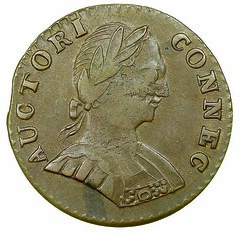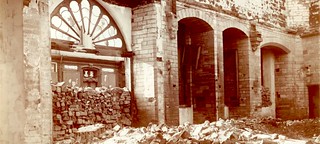
PREV ARTICLE
NEXT ARTICLE
FULL ISSUE
PREV FULL ISSUE
LOOSE CHANGE: DECEMBER 6, 2020Here are some additional items in the media this week that may be of interest. -Editor
Reynolds Reviews Connecticut Coppers Greg Reynolds is publishing a multipart series about Connecticut Coppers on the Greysheet site. The first two parts are available online. -Editor
Before the U.S. Constitution was adopted, the highest laws in the United States were the Articles of Confederation, which authorized individual states to mint their own coins. Moreover, the Articles of Confederation made it very difficult for a national coinage to be viable. Later, the U.S. Constitution allowed for a national mint to be established by passing a law; a special procedure was not required. Interestingly, the U.S. Constitution prohibited individual states from minting their own coins, which is why there are no State Coppers dated after 1788, though some were likely to have been backdated and minted after 1788.
To read the complete articles, see:
Coin Metal Modification Act In his Coin Collectors Blog December 5, 2020, Scott Barman discusses one coinage-related bill in the U.S. Congress. -Editor This week, the House of Representatives suspended their rules to pass H.R. 7995, Coin Metal Modification Authorization and Cost Savings Act of 2020. While the bill appears to have good intentions, it is largely a do-nothing measure for a do-nothing Congress. The primary problem is that the bill ignores that Congress passed a law in December 2010 (Public Law 111-302, 124 STAT. 3272) that requires the U.S. Mint to research alternative metals and provide a report every two years. Since Congress passed the law, the U.S. Mint issued four reports to Congress, with the last delivered in April 2019.
To read the complete article, see:
Destruction of the Library of Louvain Here's a sad tale for bibliophiles - the destruction of the Library of Louvain (twice). -Editor
This library grew over the succeeding century and a half, its collections increasing in size through purchase and donation. Louvain was a comparatively rich university and its riches helped the development of the library. In the late 17th century a new approach to shelving, recently established in France, was adopted with bookcases fitted against the walls of the library, with windows above, as opposed to the old medieval and Renaissance fashion of bookcases projecting out from the walls into the library room. By 1914 the library at Louvain had over 300,000 volumes in its collection, and a group of special collections of international quality. The importance of the library could be seen in its glorious baroque buildings. Its holdings reflected Belgian cultural identity, documenting the intellectual contribution of the greatest minds of the region, and preserving the university's strongly Catholic cultural flavor. It was also a national resource, as a library of legal deposit and open to the general public. There were almost a thousand volumes of manuscripts, mostly classical authors and theological texts, including the Church Fathers, and medieval philosophy and theology. It also held a sizeable collection of incunabula and uncatalogued collections of oriental books, and manuscripts in Hebrew, Chaldaic and Armenian.
To read the complete article, see:

Wayne Homren, Editor The Numismatic Bibliomania Society is a non-profit organization promoting numismatic literature. See our web site at coinbooks.org. To submit items for publication in The E-Sylum, write to the Editor at this address: whomren@gmail.com To subscribe go to: https://my.binhost.com/lists/listinfo/esylum All Rights Reserved. NBS Home Page Contact the NBS webmaster 
|

